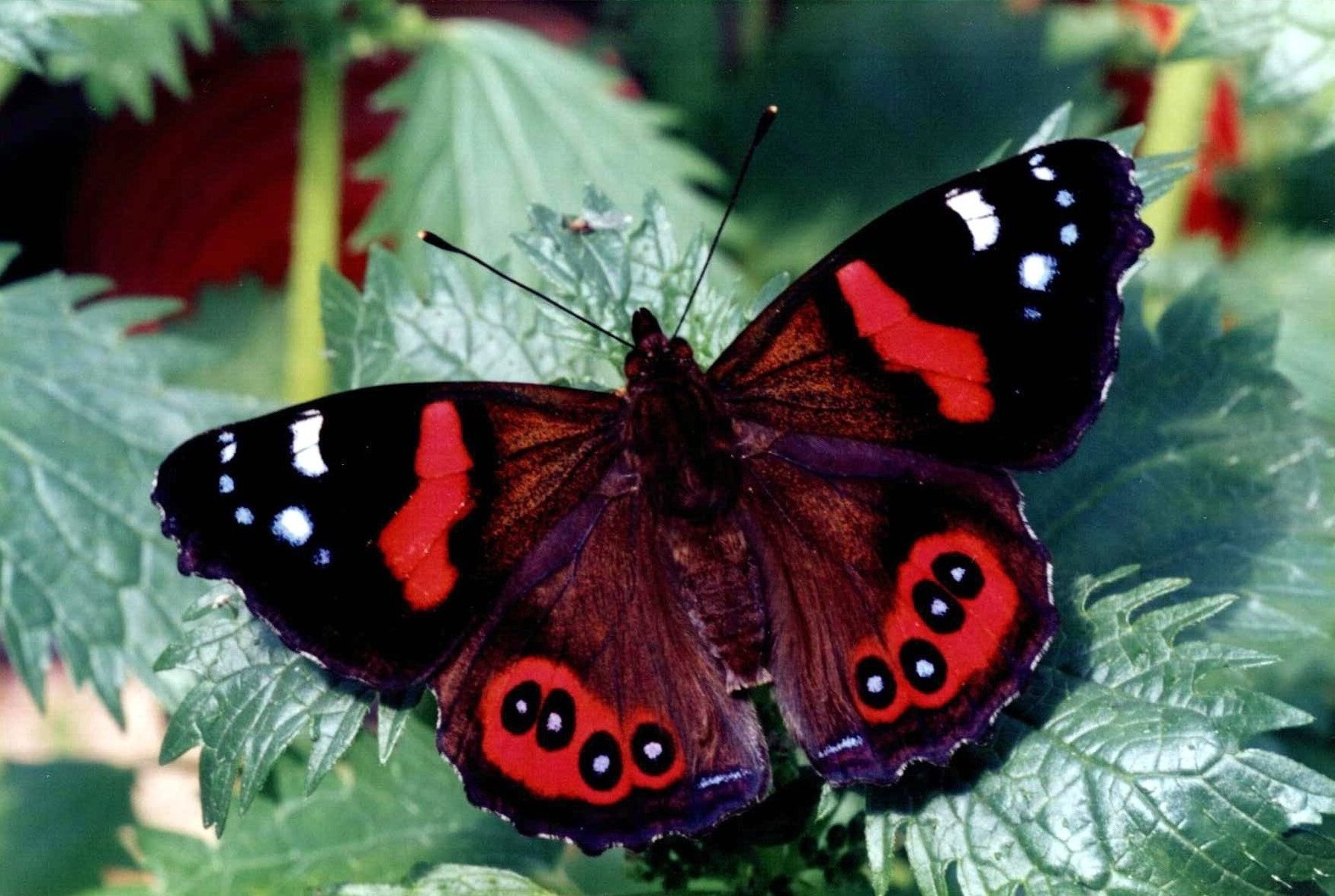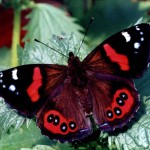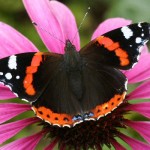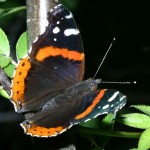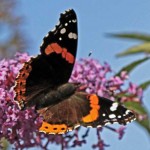Red Admiral Facts
Scientific Classification of Red Admiral: Vanessa Atlanta
Kingdom of Red Admiral: Animalia
Phylum of Red Admiral: Arthopoda
Class of Red Admiral: nsecta
Order of Red Admiral: Lepidoptera
Family of Red Admiral: Nymphalidae
Genus of Red Admiral: Vanessa
Species of Red Admiral: V.atlanta
Pictures of Red Admiral
Take a look at some of the exciting pictures of these species!
Some Interesting Facts about Red Admiral
These species are no doubt very beautiful and attractive.
- These butterflies have breathtaking velvety black colored wings coupled by a red band to go through it..
- These are candid butterflies.
Range of Red Admiral
These species prefer to dwell in warmer parts of Mexico, USA, North Canada, Newfoundland, Churchill, Hawaii, Newzealand, and Europe and Northern regions of Asia, Africa.
Characteristics of Red Admiral
- These species are of moderate size with velvety wings with a red band cutting across.
- There is a red border present right at the end of the butterfly wings.
- The color of the band ranges from dark red to orangish red.
- The frontal wings are dotted with white blotches.
- The color of the back wings is generally grey to green.
- One could find that the color of their caterpillar is greenish grey to black in color with stripes in yellow.
Behavior of Red Admiral
- These motley-colored butterflies fly during both during the day as well as the night.
- The males defend and fight for the protection of the females.
- These species like to remain within houses.
- They are often found unafraid of human beings and calmly sit on them.
Food Habits of Red Admiral
These species like to feed on fermenting fruits, sap of the trees and almost anything dropping from the tree. In addition to this, they like to have flowers, milkweed, flower weed and aster in their diet.
Habitats of Red Admiral
They are territorial in nature. One could spot these species mainly in the forests, mountains towns, gardens, marshes, parks or seashores.
Breeding of Red Admiral
In case of these species, the males tend to be territorial. They usually prefer a sunlit area to carry out the process. However, if they spot any male counterpart in the vicinity, then both of the same genders get competitive and fight against each other.
Life Cycle of Red Admiral
- Initially these species lays the egg on the plant like nettle.
- Their eggs are usually small so much so that it is smaller than even 1 mm. It just takes about one week for the eggs to hatch.
- Next important step in the cycle of the butterfly is the larvae. In the initial stages, the red admiral larvae are light green in color but as the larvae begin to develop they get darker. With time, the larvae form a tent on the leaves. Depending upon the temperature, the end stage persists for 2 – 3 weeks. The full-grown larvae shall be generally spotted in black color.
- The developing stage however shows a variety of colors ranging from greenish brown to yellowish green.
- The last stage depicts the development of pupa. In order to disguise the pupa, these develop some metallic spots on their body.
- Finally, the stage comes when the butterfly comes out of the pupa and it lasts for about 2 hours. Their wings remain dry initially.
Host Plant of Red Admiral
- They thrive on any types of nettle but are usually found to feed on Common Nettles. In addition to this, these nettles provide fortification from predators.
Predators of Red Admiral
- Large insects
- Spiders
- Wasps
- Birds
- Bats
- Large insects
Migration of Red Admiral
These species are found almost everywhere. They mostly hibernate during wintertime. The species inhabiting the northern portion have originally migrated from the southern regions.
Life Span of Red Admiral
During the winter, these species live for about 9 months. However in the summer, these species live for about 4 – 6 months.
Conservation Status of Red Admiral
These species are not in the list of those endangered.
Significance of Red Admiral
The red admiral symbolizes souls or spirits. However, some traditional cultures have elaborated it as transformation of soul or resurrection. The lifespan of these species is very small.
